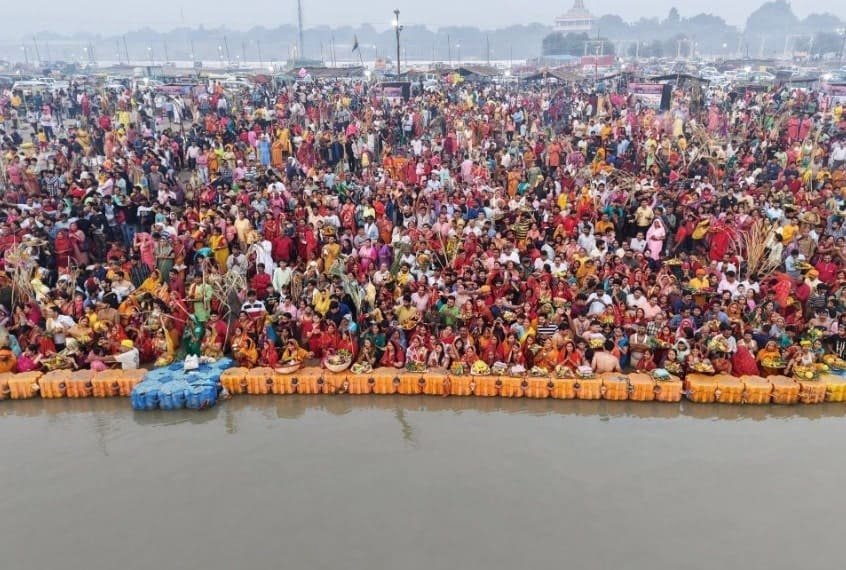
New Delhi, Oct 24 (IANS) Four years ago, when the last American military planes lifted off from Bagram Air Base, Pakistan’s generals could hardly contain their jubilation.
The Taliban’s triumphant return to Kabul was hailed in Rawalpindi as a vindication of Pakistan’s decades-long regional strategy of cultivating a supposed “strategic depth” that would give it decisive influence and secure a pliant Islamist buffer state against India.
But history has come full circle, and the illusion has been shattered. This month’s deadly cross-border clashes between Pakistani and Taliban forces mark not only a breakdown of the post-2021 “Taliban-ISI detente” but a dramatic transformation of Pakistan’s regional position.
What began as a calculated project of proxy management has devolved into open confrontation. Pakistan’s military, which was once the patron and benefactor of the Afghan Taliban, finds itself squarely in direct combat with its former proteges.
On the night of October 11, the Durand Line border from Chitral to Angoor Adda in Khyber Pakhtunkhwa and Bahram Chah in Balochistan saw intense fighting between the Pakistani Army and Afghan Taliban forces.
Islamabad deployed advanced fighter jets and artillery against Afghan Taliban positions, claiming to have killed more than 200 of their soldiers, besides Pakistan Taliban fighters.
On the other hand, Kabul has claimed to have killed 58 Pakistani soldiers, with Pakistan Army’s Inter-Services Public Relations (ISPR) acknowledging 23 casualties among its ranks. The clashes were only halted after urgent mediation by Saudi Arabia and Qatar, underlining the gravity of a conflict that could easily spiral into a full-fledged border war.
This latest episode of cross-border military confrontation between Pakistan and the Afghan Taliban is not a mere border skirmish. It signifies a monumental failure of Pakistan’s regional policy, which for long relied on the dangerous fiction that militant proxies can be managed, that ideological kinship can substitute for sovereignty, and that regional dominance can be sustained through coercion.
It is no secret how Pakistan’s military establishment invested heavily in the Afghan Taliban’s return to power with a belief that it could shape Kabul’s choices in ways that served its own regional interests.
During the two decades of the U.S.-led war in Afghanistan, the Inter-Services Intelligence (ISI) carefully nurtured Taliban networks across Pakistan’s borderlands, offering sanctuary to senior leaders even as Islamabad collected billions in U.S. counterterrorism aid.
That duplicity was tolerated by Washington so long as Pakistan appeared to cooperate against Al-Qaeda. But with the U.S. withdrawal, the contradictions came home to roost. Once in power, the Afghan Taliban no longer needed Pakistan and certainly no longer wished to be seen as its client. As Kabul began to assert an independent foreign policy, seeking legitimacy and recognition from regional powers such as Iran, China, Russia, and India, it started to sorely pinch Pakistan.
For Islamabad, this autonomy was intolerable. The Pakistani establishment had built its entire regional calculus on the assumption that Afghanistan would remain strategically subordinate and a convenient hinterland for influence projection and a denial zone for its adversaries, particularly India.
But the new Taliban government has repeatedly rejected Pakistani diktats, especially regarding the Tehreek-e-Taliban Pakistan (TTP), the Pakistani insurgent group that Islamabad alleges is operating from Afghan soil. The Taliban regime’s refusal to curb the TTP’s activities or extradite its leaders has become the single greatest irritant in bilateral ties.
Pakistan’s October 9 airstrikes across the Afghan border, reportedly targeting TTP chief Noor Wali Mehsud, were not just tactical reprisals but expressions of strategic frustration, particularly after dozens of its soldiers have been killed in the last few months, including 12 a day earlier, in anti-insurgency operations.
The strikes hit targets in Kabul, Khost, Paktia, and Paktika, which signalled a willingness to escalate not just the militant group but also directly against the Afghan state.
But these actions also reveal the limits of Pakistan’s militarised regional diplomacy. After having relied on coercion and proxies for decades, the Pakistani state appears incapable of engaging its neighbours through civilian or economic instruments. As such, it appears that whenever its influence begins to wane, its instinct is to reach for the gun.
The result, however, is a region turning increasingly hostile. The Taliban’s Afghanistan is now as defiant as India and Iran, both of whom Islamabad once viewed as its chief adversaries. Pakistan’s aggressive tactics have left it isolated in a neighbourhood where nearly every actor now questions its credibility.
For New Delhi, the spectacle unfolding across the Durand Line offers a quiet but profound vindication. For years, Indian policymakers have argued that Pakistan’s strategy of cultivating militant groups as foreign-policy tools would ultimately backfire. That prophecy has now materialised: the very proxies Islamabad once nurtured to gain leverage over others have turned inward, threatening Pakistan’s own security and sovereignty.
The rise in attacks by the TTP inside Pakistan and Islamabad’s inability to control them strengthen India’s argument that the use of extremist proxies is inherently self-destructive. It also bolsters New Delhi’s case internationally, especially among Western governments, that Islamabad remains the instigator and the victim of terrorism after having relied on distinctions such as “good” and “bad” Taliban.
The Taliban’s growing independence, meanwhile, provides New Delhi with a rare diplomatic opening. In a move almost unthinkable a few years ago, the Taliban government’s foreign minister, Amir Khan Muttaqi, made his first official visit to India this month, coinciding with Pakistan was carrying out its airstrikes across the border and subsequent border clashes. The timing was unmistakable as Islamabad bombed Afghan territory, Kabul courted Indian engagement.
Muttaqi’s visit underlined a convergence of interests between Kabul and New Delhi. The Taliban have publicly supported India-backed Chabahar port project of Iran as a potential trade corridor for Afghanistan, which could reduce dependence on Pakistan’s ports. For India, this development represents a subtle yet significant strategic gain as it undercuts Pakistan’s decades-old dream of monopolising Afghanistan’s trade routes and geopolitical orientation.
Additionally, the military clashes and Kabul’s diplomatic realignment mark the symbolic death of Pakistan’s “strategic depth” doctrine, wherein it dreamt of nurturing Afghanistan as a pliant backyard for its regional ambitions. But Islamabad and Rawalpindi now have to reconcile with a reality that they have long denied, which is that Afghanistan, like any other sovereign state, will pursue its own interests, even when its interests collide with Pakistan.
This overreach risks further eroding the military’s credibility. Pakistanis have been increasingly questioning the failure of the army, which controls the levers of both federal governance and the country’s foreign policy, to provide basic security. Internationally, its actions reinforce an image of a state perpetually at odds with its neighbours and a security actor rather than a responsible partner.
What is pertinent, though, is the collapse of Pakistan’s attempt to control the regional chessboard through militant leverage. While the Taliban’s Islamic Emirate is asserting its autonomy, India is slowly re-entering the Afghan theatre through quiet diplomacy and development-oriented engagement. Even China and Iran, though cautious, have preferred to deal with Kabul directly rather than through Islamabad’s military mediation.
In this changing landscape, India’s restraint looks increasingly calculated. By maintaining engagement and signalling openness to dialogue, New Delhi gains diplomatic space without entanglement. If Pakistan’s latest strikes were meant to reassert dominance, it is advantage India as Kabul can see through the façade of Islamabad and move further closer to New Delhi.
–IANS
scor/dan






